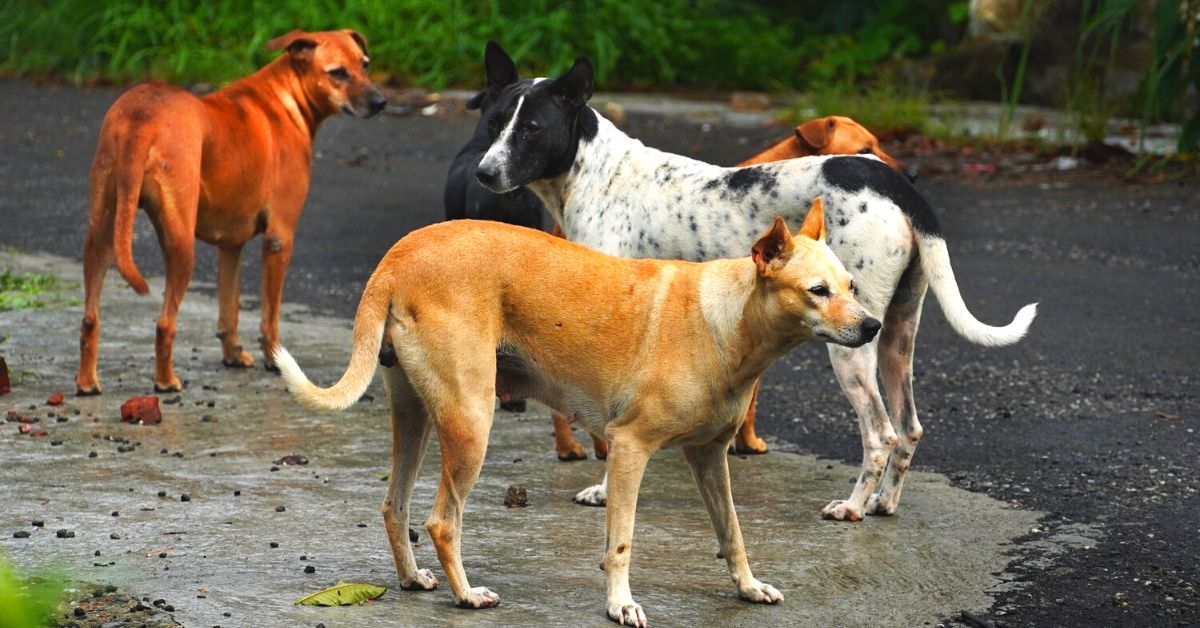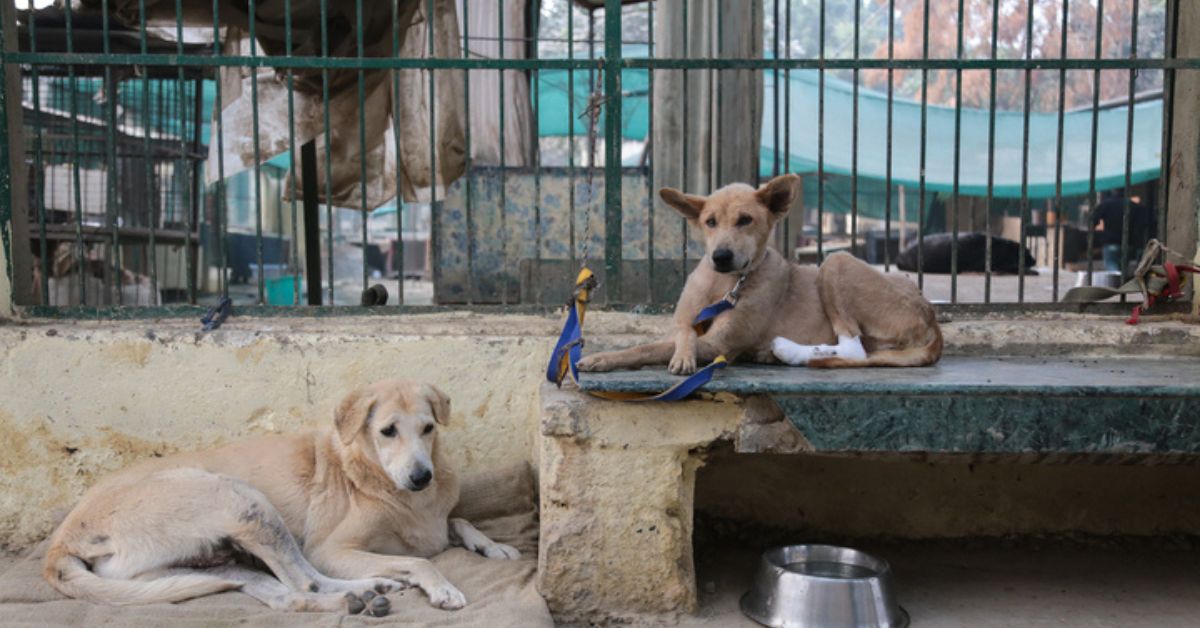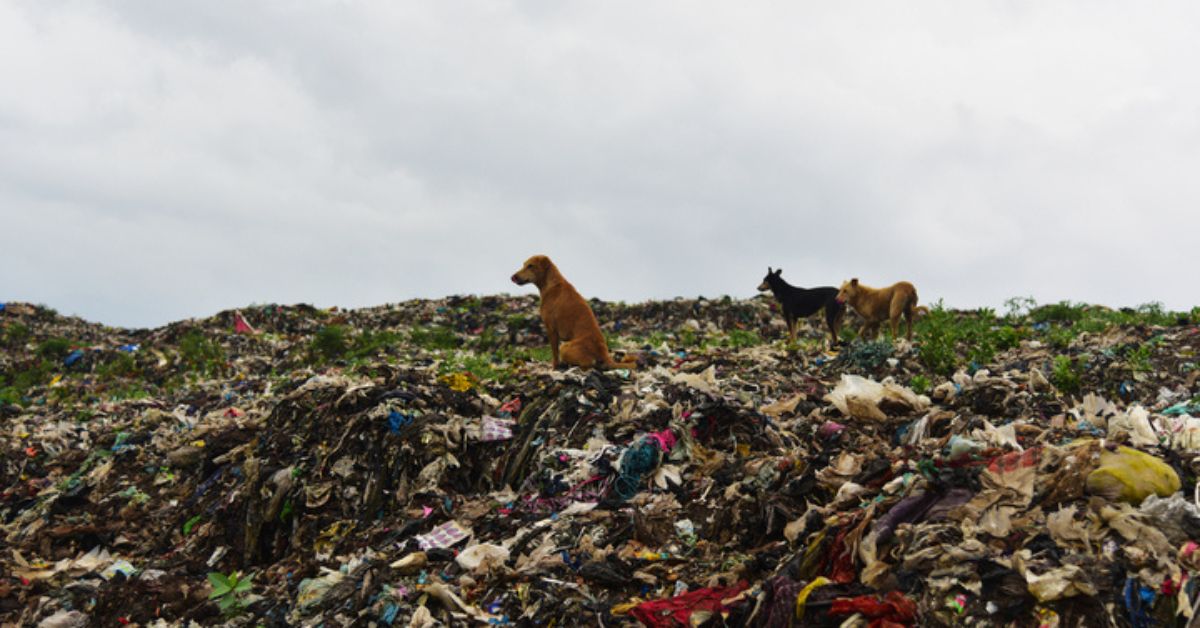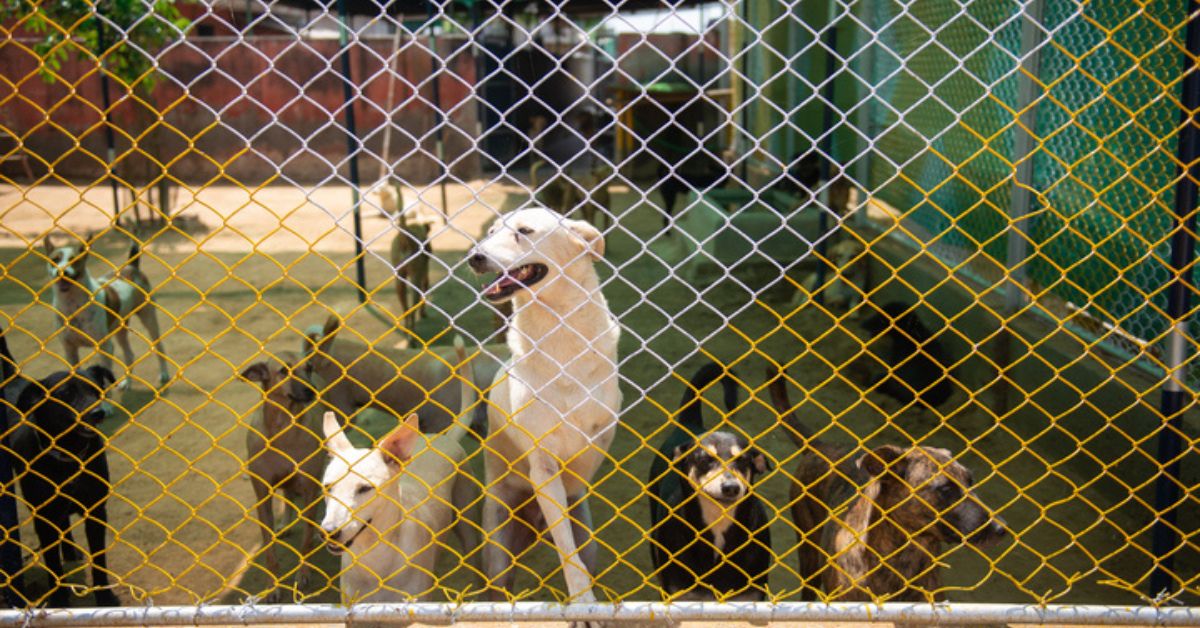Deep Dive: How Can India Humanely Solve its Growing Stray Dog Problem?
In Part 2 of this two-part explainer, we speak to experts in animal and disease ecology, as well as animal rights activists, to understand how India may control and manage the issue of street dogs.

In the first part, we discussed the growing menace of free-ranging (‘stray’) dogs in Indian cities, experts’ view on the inability of the ABC (animal birth control) programme to manage their growing population, and why feeding them in groups and leaving them on the street exacerbates the problem.
Globally, the view on street (stray or free-ranging) dogs is very different to that of India. On the one hand, there are countries in Asia and Africa that consume dog meat. One estimate states that approximately 30 million dogs are killed for human consumption annually in Asia alone.
“At the other extreme are very large numbers of people in the western world that are dog lovers and these western nations have gone to great lengths to facilitate the companionship of pet dogs through the provision of multiple dog amenities,” writes Dr Ramanath Jha, a Distinguished Fellow at the Observer Research Foundation.
In countries like the United States, for example, “Dogs must be owned or should be taken away from the roads and confined in dog pounds. Once brought to dog pounds, there is a small window during which the dogs could be adopted. Once the period is over, dogs are euthanised so that there is space to take in other dogs that keep coming in every day,” adds Jha.
India’s official position on stray dogs falls more on the side of compassion, but unlike the US, for example, our policy framework allows them to be left and cared for on the streets. This policy, opines Dr Abi T Vanak, an animal ecologist and conservation biologist, allows strays to suffer unnecessarily. He also goes on to argue how the ABC rules go against the Prevention of Cruelty to Animals (PCA) Act, 1960. This is ironic because the rules were notified under PCA Act, 1960.
“The PCA Act clearly defines what is cruelty. It actually allows for ‘the destruction of stray dogs in lethal chambers’. So, how can you frame rules that then prohibit the same? Also, the PCA Act does not recognise any category called street dogs. The ABC rules invented this category. The Act, in fact says, you should not allow animals to suffer unnecessarily. By mandating that dogs live on the streets, you’re allowing for it because they do suffer. There’s a whole bunch of problems with the ABC rules,” he says, in a conversation with The Better India.

Meghna Uniyal, director and co-founder, Humane Foundation for People and Animals, also agrees with the notion that the ABC Rules aren’t aligned with the PCA Act.
“The Prevention of Cruelty to Animals Act protects animals from homelessness and abandonment. It mandates the sheltering and even euthanasia of unowned and stray dogs whereas the ABC rules require them to remain homeless on the streets,” she says.
She goes on to further elaborate, “The subordinate ABC Rules create an entity called ‘street/community’ dogs that is not found in the parent Act or any other law or Act. The rules further force unowned dogs to be homeless where they cannot be protected from diseases, accidents, conflict and remain without shelter. While the PCA Act penalises abandonment and suffering of animals, the ABC Rules legalises it.”
If this is indeed the case, why haven’t the courts, particularly the Supreme Court, intervened? “The Supreme Court is currently hearing multiple cases challenging the legality and constitutionality of the ABC Rules,” she says.

Finding solutions
There are no easy answers. It’s a complicated problem. But if you divide the problem into two categories (urban dogs and rural dogs), it becomes very tractable.
“What happens in rural areas is that most dogs are privately owned or they are associated with some households. It’s easier for us to tackle any problems associated with free-ranging dogs because we can talk to gram panchayats, villagers, and have some education programmes about improving the health of these animals, taking better care of them and having government bodies give free vaccines to them so that they don’t get rabies. We can also work with villagers to remove any free-ranging dogs on their streets that don’t belong to local residents or communities. If there are any dogs that cause conflict, villagers can either shelter them, put them up for adoption or humanely euthanise them if they’re too old, sick or carry diseases. That will actually take care of most of the free ranging dog problem in India,” says Vanak.
The decision to euthanise a stray dog or any animal is a “complex ethical matter”. The World Society for the Protection of Animals (World Animal Protection, WPA), a London-based non-profit, believes euthanasia is acceptable and necessary “when an animal is suffering due to an incurable illness or injury, or when an animal presents a significant risk to human health and safety or the safety of other animals, through disease or aggressive behaviour.”
Under India’s ABC Rules (2023), only an “incurably ill and mortally wounded dog as diagnosed by a team appointed by the Local Animal Birth Control Monitoring Committee” can be euthanised.
Meanwhile, the Royal Society for the Prevention of Cruelty to Animals (RSPCA) believes that euthanasia is acceptable in certain circumstances only. Euthanasia may be necessary, “when the animal is not re-homeable, because it is sick or injured, for behavioural reasons or occasionally because there are no appropriate homes available and the animal would therefore endure long-term suffering through deprivation of basic needs.”
As far as methods of euthanisation are concerned, the Canadian Veterinary Medical Association “holds that when an animal is euthanized the method used must be appropriate for the species, reliable, humane and must minimise fear, pain, and distress.” On the method of euthanasia for dogs, the WPA highlights “intravenous injection of 20% pentobarbitone solution”, which results in “rapid loss of consciousness followed by cardiac arrest” and is regarded as ‘best practice’.

Strict rules for dogs
“We must have strict rules for dogs in urban areas. If people want to keep pets, they should keep them at home. If people want to take care of street dogs, they should take them home. We cannot entertain activities like cooking food at home and feeding 20 dogs on the street. There has to be a strict policy that stops people from feeding dogs on the street. Following on from this, there has to be strict pet licensing and registration. This is not rocket science. It’s being done all over the world. We don’t need to reinvent the wheel here,” he adds.
Vasundhara Anand, co-founder of KVAAB Welfare Foundation, a non-profit which takes care of 250 ‘community dogs’ in Central and South Delhi, holds a divergent view.
“People today have a lot of reservations about community dogs because of the mass hysteria surrounding them. Once you feed these dogs very regularly, they’re not going to be scavenging or going through dustbins. Once they’re well-fed, these dogs won’t exhibit a lot of aggression. Once people know somebody is taking care of them, they’re not going to hit these dogs. Once you stop hitting these dogs, they’re going to stop chasing. It’s an endless cycle. Somebody has to break the cycle. Once they’re neutered, their aggression gets slightly suppressed,” she says.
“These dogs have to be well-fed. For example, in one part of Central Delhi, there are about 120 dogs there. Once you visit the area after 8pm, you will hardly see any dogs because all of them have eaten their morning meals and are hiding under the cars and chilling. These dogs don’t belong on the streets hungry and starving. They belong to communities. Small businesses and localities should be adopting dogs. Nobody belongs on the street,” she adds.

Meanwhile, Dr Aniruddha Belsare, assistant professor of disease ecology at Auburn University, emphasises responsible pet ownership. “If you own or care for dogs, neuter and vaccinate them, and do not let them roam unsupervised. Provide food and water, and clean after them. It is irresponsible of you if you choose to only feed dogs in your locality but not clean their faeces and let them run on the streets unsupervised. This is cruelty,” he says.
Why is this necessary? “There are various other diseases spread by dogs including parasitic worms from the faeces. These worms and worm cysts enter surface water such as open drains, lakes, etc. With millions of dogs roaming the streets and leaving their faeces all over the place, it poses a serious health hazard,” says Vanak.
To reduce dog attacks on people, meanwhile, it’s imperative to reduce the size of their packs. Wherever you have packs of more than three or four dogs, you’re going to have attacks. As explained in Part 1, mass feeding of stray dogs is what creates packs.
If feeding is out of the question, what can residents who care for dogs do? The answer will be based on what you want to achieve. Do you ultimately want to see no dogs on the streets?
“If that’s the case, make it easy for people to adopt and register dogs, give people who want to shelter dogs or create dog shelters the necessary resources, and those who want to feed them publically should set up a shelter of their own where they can take care of them. Government needs to frame rules for these solutions on an urgent basis. Yes, it costs more to shelter dogs in the long run, but we are actually getting rid of the problem. With the ABC programme, we’re not getting rid of the problem because you’re putting the dogs right back in the streets. If you really want to take care of dogs, get them off the streets. Let’s set up shelters for them. If there are dogs who are dangerous and known to bite people, remove them from the streets immediately and house them in shelters for life until they are picked up for adoption or humanely euthanise them so they don’t suffer on the streets,” says Vanak.

However, Huma Hazarika Sharma, an independent rescuer of stray animals based out of Delhi, argues that many shelters already set up for dogs lie in terrible conditions, and that they are primarily set up for sick and injured dogs.
“A lot of them start with the right intentions, but unfortunately a lot of them lose their sense of purpose along the way. See, these shelters are meant for sick and injured dogs. Some of these dogs carry diseases like distemper and parvo. If you send a healthy dog there, especially one which isn’t vaccinated, they can catch these diseases and the ones with low-immunity will get wiped out. These shelters are not the right place for healthy dogs,” she argues.
The obvious solution here is to set up different kinds of dog shelters. More worryingly, however, she says, “There are many shelters that do a poor job of rehabilitating these street dogs. I’ve seen videos of people at this shelter feeding stale rotis to dogs who look emaciated.”
If you look at the Prevention of Cruelty to Animals Act, it very clearly states that the Animal Welfare Board of India (AWBI) should set up and monitor shelters. “They have failed in their responsibilities. Since they can’t do their jobs, should we leave all these dogs on the street? Government should cancel the registration of NGOs who are not maintaining proper dog shelters, fine them under the provisions of PCA Act, and send them to jail,” says Vanak.
On an administrative level, if you don’t empower municipal authorities, nothing can happen, says Vanak, noting that it is essential to “fund them properly”.

A matter of public interest
In May 2022, the Delhi High Court observed that stray dogs have the right to food and citizens have the right to feed community dogs.
In October 2022, the Nagpur bench of the Bombay High Court prohibited the feeding of stray dogs and directed authorities, including the police, to take “stern action” including registering offences against anyone “obstructing them acting against the menace of stray dogs”. It further stipulated that people interested in feeding stray dogs must first formally adopt, register and take care of them. If not, they could put these stray dogs in shelter homes.
However, in November 2022, three women from Nagpur moved the Supreme Court, challenging the Bombay High Court’s order. According to Dr Ramanath Jha, “Those petitioning the Supreme Court argued that the High Court order affected the rights of the street dogs and was contrary to the statutory provisions and the preceding orders of the Supreme Court. No legislation prohibited the feeding of stray dogs, and neither was it a penal offence under any statute.”
For the time being the Supreme Court has stayed the High Court order, and directed municipal authorities to demarcate appropriate locations where the general public can feed them. Also, only part of the Bombay HC order was stayed—the part where dog feeders were asked to adopt all the dogs they feed and fines on them for feeding. “The case continues and at the last hearing the Nagpur bench asked the municipality to carry out their duty under the State Municipal and Police Act to protect citizens from stray dog attacks,” says Uniyal.
“Equally, the Municipal Corporation will take steps to deal with the issue of ‘nuisance’ caused by ferocious and aggressive stray dogs, in accordance with law. The general public must ensure that public nuisance is not caused by feeding of the stray dogs,” the apex court said.

As Uniyal notes, “The Supreme Court has been hearing cases related to the stray dog issue since 2009. Currently there are multiple benches hearing cases with regard to the ABC Rules 2001, stray dog feeding and ABC Rules 2023. As such there is no stated position of the court as yet as while a matter is pending status quo is maintained. However, earlier this month the apex court stayed a Bombay High Court order which had upheld the ABC Rules 2023 and ordered the release of stray dogs into a residential society in Pune.”
The position taken by our courts on the issue of stray dogs has been largely one of sympathy and kindness. But is this kindness and sympathy misplaced? It’ll be interesting to see what final say the Supreme Court has on this matter. If you found our stories insightful, informative, or even just enjoyable, we invite you to consider making a voluntary payment to support the work we do at The Better India. Your contribution helps us continue producing quality content that educates, inspires, and drives positive change. Choose one of the payment options below for your contribution- By paying for the stories you value, you directly contribute to sustaining our efforts focused on making a difference in the world. Together, let’s ensure that impactful stories continue to be told and shared, enriching lives and communities alike. Thank you for your support. Here are some frequently asked questions you might find helpful to know why you are contributing?

The apex court’s judgement on the matter will bring more clarity on what road India takes.
(Edited by Divya Sethu; Images courtesy Shutterstock)
This story made me
-
97
-
121
-
89
-
167















